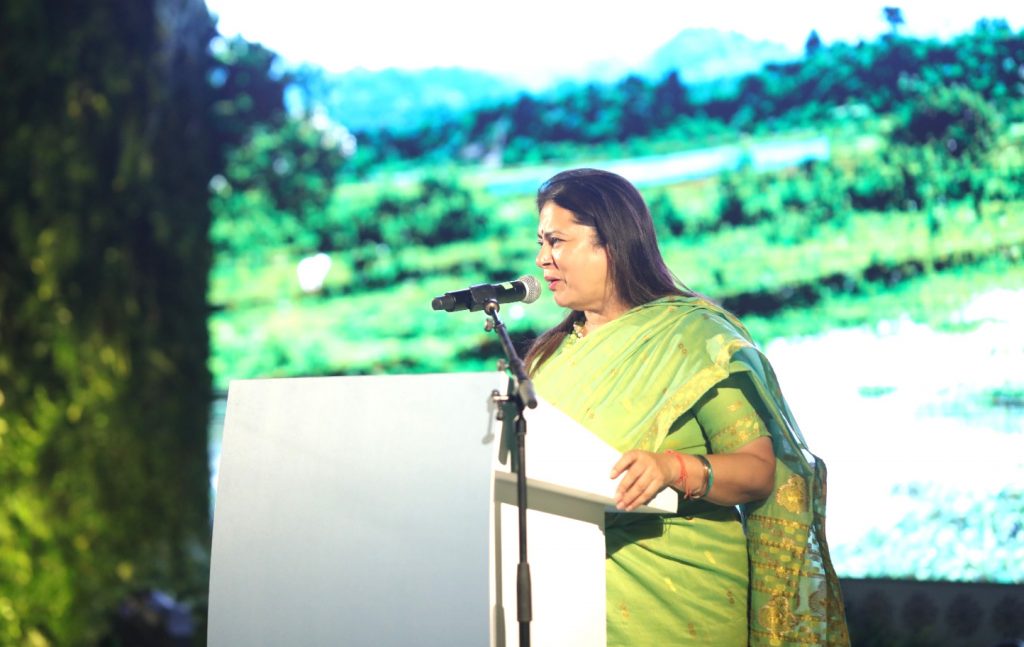
The Himalayan Mail, New Delhi, Sep. 5
In a bid to restore 1 million hectare of land in the Eastern Himalayas, a massive forestation drive has been launched with an aim to plant over 1 billion trees. Balipara Foundation based in Assam in partnership with Conservation International has set in motion an ambitious reforestation and conservation initiative in the vast biodiversity-rich Eastern Himalayas.
The initiative called ‘Great People’s Forest’, inaugurated in the presence of G20 Sherpa Amitabh Kant here on Saturday, has been taken as a part of India’s G20 presidency theme — ‘One Earth, One Family, One Future’.
By 2030, they seek to plant upwards of 1 billion trees and restore and protect 1 million hectares of land across the Eastern Himalayas, from the mountains to the mangrove spanning across the northeastern part of India, Bhutan, Bangladesh, and Nepal through community participation.
Union Minister of State for External Affairs Meenakashi Lekhi also took part in the launch event and has appreciated the noble initiative.
“All this is happening when India is hosting G20 and the theme is ‘Vadudeva Kutumbkam’ which the world is one big family and one earth-one future. Many countries have talked about climate change but I think it’s time to put the action in order and I must speak on behalf of my country,” Lekhi said.
“The right action is the need of the hour…Preserving nature is our culture and our government’s motto is ‘Vikas Bhi Virasat Bhi’. It is a time to give back to nature,” she added.
From the world’s tallest mountains, two of India’s most important rivers – Ganga and Brahmaputra, the world’s largest delta, and the globe’s largest mangrove forest, the region is a vast store of biodiversity.
“The Great People’s Forest is a partnership initiative between the Balipara Foundation and Conservation International. Through the Great People’s Forest, we will be planting 1 billion trees across 1 million hectare in the Eastern Himalayas. Therefore, between northeast India, Nepal, Bhutan, and Bangladesh. This initiative will actually be an initiative for the 1 billion people who depend on water from the region and 240 million people who depend on the region and live in the region for their lives and livelihoods,” Saurav Malhotra, CEO of Balipara Foundation told ANI on Monday evening.
Asked how will Balipara Foundation collaborate with the neighbouring countries, to which Malhotra said they tied up with local partners to make the initiative fruitful.
“We have fantastic local partners in all the countries, all of whom are present here today. We have the biggest organizations from all the countries, and these organizations have been working with their governments in their countries for the last one to five decades. And it is through these partnerships that we will leverage the power of collaboration and expand the work that these great organizations do already,” he said.
Balipara Foundation is focused on a community-based approach to conservation. According to its website, the foundation embarked on an ambitious journey to restore forests across Assam, stretching from Udalguri district all the way to Sonitpur, along the Arunachal Pradesh – Assam – Bhutan border.
Malhotra was also asked how his foundation was galvanizing the communities and how it is raising the resources.
He said, “I think communities come together when they believe in it. Communities in the region now know that nature for them is important and that if they don’t take the nature that their lives depend on, that life might become impossible. What we have to do and why we are here today is to tell the story of the region to the rest of the world…We talk about the Amazon, we talk about the Congo but we have to begin to tell the story of the (Eastern Himalayas) region to the world so we can galvanize support.”
They aim to raise USD 1 billion dollars to support this work from public, private, and other philanthropic sources.
Eastern Himalayas is also a region of vital significance to humanity, home to some of the most densely populated areas on earth with a billion relying directly on its land and water for their livelihoods and survival. It is feared that a third of the glaciers of the Eastern Himalayas could be lost by 2050 as a result of climate change. (ANI)